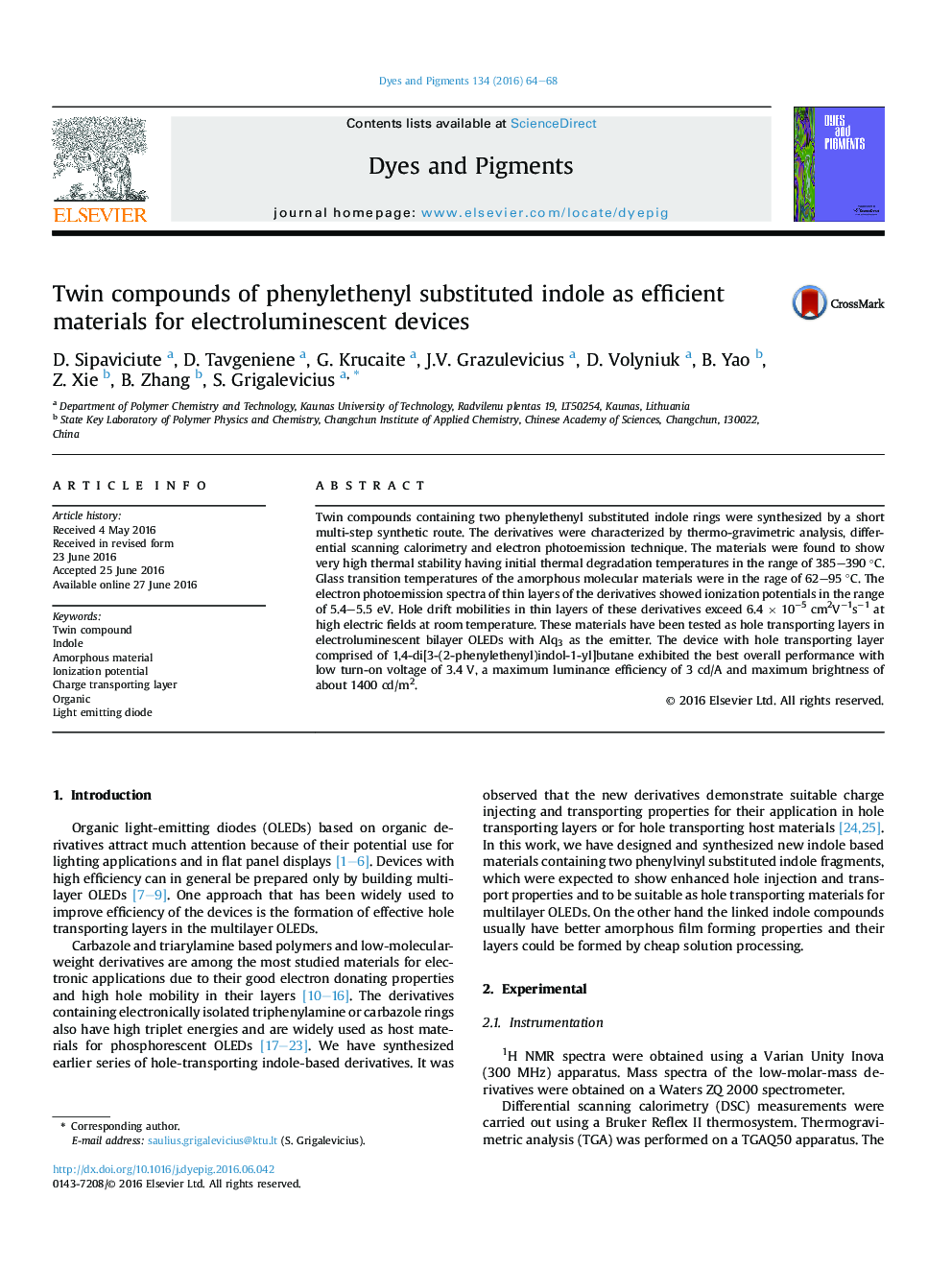| Article ID | Journal | Published Year | Pages | File Type |
|---|---|---|---|---|
| 175233 | Dyes and Pigments | 2016 | 5 Pages |
•Compounds with two phenylethenyl substituted indole rings were synthesized.•The derivatives are efficient materials for electroluminescent OLEDs.•Hole drift mobilities in their layers exceed 6.4 × 10−5 cm2V−1 s−1.•An OLED device using one the materials demonstrated efficiency of 3 cd/A.
Twin compounds containing two phenylethenyl substituted indole rings were synthesized by a short multi-step synthetic route. The derivatives were characterized by thermo-gravimetric analysis, differential scanning calorimetry and electron photoemission technique. The materials were found to show very high thermal stability having initial thermal degradation temperatures in the range of 385–390 °C. Glass transition temperatures of the amorphous molecular materials were in the rage of 62–95 °C. The electron photoemission spectra of thin layers of the derivatives showed ionization potentials in the range of 5.4–5.5 eV. Hole drift mobilities in thin layers of these derivatives exceed 6.4 × 10−5 cm2V−1s−1 at high electric fields at room temperature. These materials have been tested as hole transporting layers in electroluminescent bilayer OLEDs with Alq3 as the emitter. The device with hole transporting layer comprised of 1,4-di[3-(2-phenylethenyl)indol-1-yl]butane exhibited the best overall performance with low turn-on voltage of 3.4 V, a maximum luminance efficiency of 3 cd/A and maximum brightness of about 1400 cd/m2.
